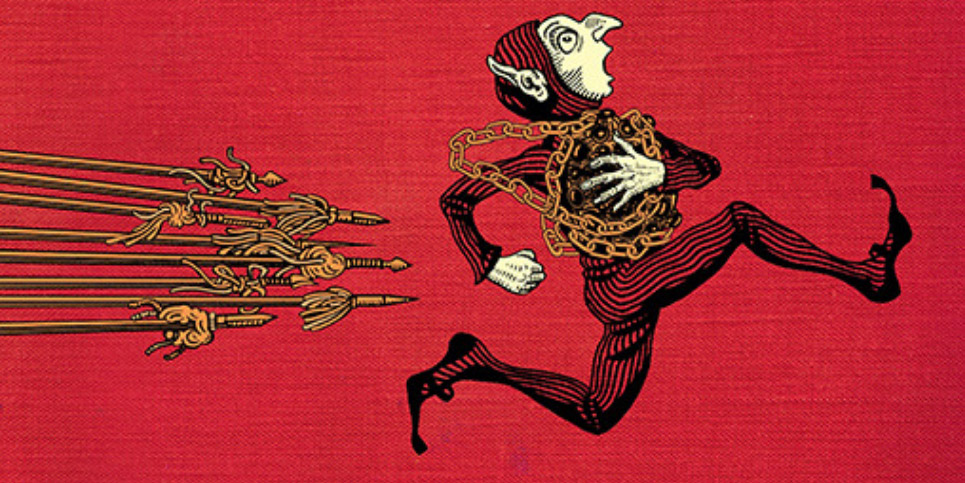The Children’s Book Review | September 17, 1018
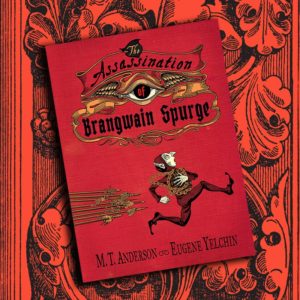 The Assassination of Brangwain Spurge was recently long-listed for the 2018 National Book Award for Young People’s Literature, and we’re feeling lucky to have spoken with the award-winning creators M. T. Anderson and Eugene Yelchin about how the two came to be paired for such an unconventionally funny collaboration! As described in the synopsis: “[The Assassination of Brangwain Spurge is] an anarchic, outlandish, and deeply political saga of warring elf and goblin kingdoms.”
The Assassination of Brangwain Spurge was recently long-listed for the 2018 National Book Award for Young People’s Literature, and we’re feeling lucky to have spoken with the award-winning creators M. T. Anderson and Eugene Yelchin about how the two came to be paired for such an unconventionally funny collaboration! As described in the synopsis: “[The Assassination of Brangwain Spurge is] an anarchic, outlandish, and deeply political saga of warring elf and goblin kingdoms.”
The Children’s Book Review: Fantasy is often thought of as a tool for escapism, but it can be a great way of building the contextual framework for exploring the realities of the world. Your story is steeped in the realm of fantasy, reminiscent of Tolkien’s Middle Earth. Was it a goal for you both to challenge readers to find parallels between the world in which we live and the world that you created together?
Eugene Yelchin: I wonder if anyone could write from any place other than his or her immediate historical moment. Parallels between the world we live in and the invented world seem inevitable. The inquisitive reader will certainly find allusions to our present, but I don’t believe it was ever our goal. We simply couldn’t help revealing our values on the page.
M. T. Anderson: Yeah, I agree. And why would you want to write about something that truly doesn’t reflect the world we actually live in? Tolkien himself, everyone says, was writing about the trauma of the First World War, though setting his book in a world of Anglo-Scandinavian myth.
As the synopsis describes: “Uptight elfin historian Brangwain Spurge is on a mission: survive being catapulted across the mountains into goblin territory, deliver a priceless peace offering to their mysterious dark lord, and spy on the goblin kingdom — from which no elf has returned alive in more than a hundred years.”The tale is clearly filled with gripping action, but there is also plenty of visual humor, too. Is there an art to finding the “right” balance between the action and humor for a middle grade audience?
Eugene Yelchin: I suspect that if an author fails to deliver a strong action line, he or she uses jokes as a sort of a crutch. I hope we managed to avoid this. Action in this book is funny. Action and humor in Brangwain Spurge are interdependent.
M. T. Anderson: Different books have a different balance, of course, and every reader will have their preference. Long live many approaches to laughter and to thrills!
Can you each share one highlight from the story?
M. T. Anderson: One of my favorite moments in the book is when we see a whole set of postcard illustrations, essentially, of a goblin city drawn by an elf – and all of them show grotesque scenes of insanity that look almost meaninglessly violent … Then you read the commentary by a goblin, who reveals that the pictures are actually totally inaccurate drawings of normal things like a kids’ game in a rainstorm, a scout troop, a gourmet dinner, a museum exhibition, and a mother-daughter flower parade. That comic miscommunication was at the heart of what we were trying to do. The reader is the only one who can see both sides of the story…
Eugene Yelchin: During the course of our correspondence, Tobin had this astonishing idea that goblins shed their skins and preserve them as mementoes of their lives’ passage. I thought it was brilliant. As a result, I drew a visual epilogue sequence, in which Brangwain Spurge, who initially finds this skin business repulsive, sheds his own skin. This visual metaphor brings the character’s arc to its most surprising yet logical conclusion. His transformation is pushed as far as it could go. I love the epilogue.
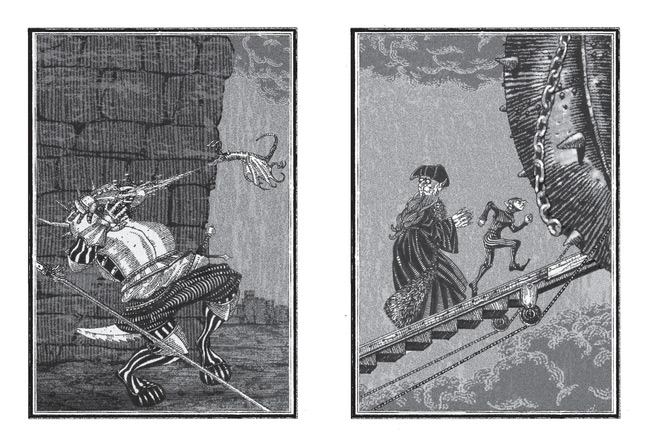
Congratulations for all of the starred reviews that The Assassination of Brangwain Spurgehasreceived. What has been the best reaction from a reader, so far?
M. T. Anderson: Well, it’s still a month from publication, so there aren’t any readers yet except professional reviewers. I liked the blog comparisons to Monty Python and Brian Selznik, though!
And we have to ask: How did two such distinguished authors come together to collaborate on such an unconventionally funny and raw social commentary?
M. T. Anderson: I had loved Eugene’s work since a few years ago when I wrote a nonfiction book for teens called Symphony for the City of the Dead: Dmitri Shostakovich and the Siege of Leningrad. Many of my friends told me I had to read a Newbery Honor book that was about that period in Russian history: Breaking Stalin’s Nose, by a guy named Eugene Yelchin. I did and it blew me away. I wrote him a fan letter. It turned out that he had actually defected from Soviet Leningrad in the 1980s. We decided to meet for lunch when I was out on the West Coast. That’s when Eugene broached the idea of trying to collaborate …
Eugene Yelchin: About two years ago, I became interested in the idea of an illustrated novel, in which the illustrations would contradict the text instead of illuminating it. The story had to be told from two opposing points of view, which meant having two protagonists instead of one and, ideally, two authors. I have admired Tobin’s work for many years and asked him to join me. His insatiable intellectual and creative curiosity had prevented him from refusing.
How did this collaboration work?
Eugene Yelchin: Tobin would write a chapter from the goblin Werfel’s point of view and I would draw a chapter from the elf Spurge’s point of view, and then we would exchange the chapters to review. Tobin would make suggestions, and I would make suggestions, and so we kept moving forward.
M. T. Anderson: And then we also moved backwards. Once we realized some of the secrets in the novel, for example, we had to go back and seed hints and clues earlier. That was really fun and challenging work.
How does writing a book solo differ to writing a book in collaboration with a fellow author/illustrator?
M.T. Anderson: What I loved about it was that the story took us places that neither of us would have gone on our own. And even better – when we were stuck as to how to make things work, I could call Eugene and gripe to him and we could hash it through! That was a real luxury.
Eugene Yelchin: The most fascinating part of our collaboration was the fact that Tobin and I have very different cultural backgrounds. We were perfectly suited to play characters with very different cultural backgrounds. In other words, we had to overcome our individual preferences in order to find the common language, which is exactly what this book is about.
Is there anything else you would like to share with our readers about The Assassination of Brangwain Spurge, your writing, or yourself?
M. T. Anderson: This book was a joy to write – and I think, for both of us, part of the pleasure was that it is a book we ourselves would have loved when we were ten or eleven. It was a total honor to work with Eugene on this project, and to explore this world that neither of us knew at the beginning – because just like the elfin scholar in the story, we also were going into uncharted territory. I can’t wait for the book to get out into the hands of kids!
Eugene Yelchin: I’m grateful that I had a chance to work with a writer I admire. Tobin’s mind works in fascinating ways, and it was a real treat to be present at the birth of his creative ideas. I love his prose — free, spontaneous, elegant, never labored. I believe I became a better writer from watching Tobin write.
M. T. Anderson: Awww! The feeling’s mutual, Eugene!
—
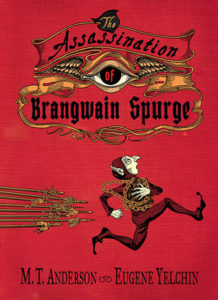 The Assassination of Brangwain Spurge
The Assassination of Brangwain Spurge
Written by M. T. Anderson and Eugene Yelchin
Illustrated by Eugene Yelchin
Publisher’s Synopsis: Subverting convention, award-winning creators M. T. Anderson and Eugene Yelchin pair up for an anarchic, outlandish, and deeply political saga of warring elf and goblin kingdoms.
Uptight elfin historian Brangwain Spurge is on a mission: survive being catapulted across the mountains into goblin territory, deliver a priceless peace offering to their mysterious dark lord, and spy on the goblin kingdom — from which no elf has returned alive in more than a hundred years. Brangwain’s host, the goblin archivist Werfel, is delighted to show Brangwain around. They should be the best of friends, but a series of extraordinary double crosses, blunders, and cultural misunderstandings throws these two bumbling scholars into the middle of an international crisis that may spell death for them — and war for their nations. Witty mixed media illustrations show Brangwain’s furtive missives back to the elf kingdom, while Werfel’s determinedly unbiased narrative tells an entirely different story. A hilarious and biting social commentary that could only come from the likes of National Book Award winner M. T. Anderson and Newbery Honoree Eugene Yelchin, this tale is rife with thrilling action and visual humor . . . and a comic disparity that suggests the ultimate victor in a war is perhaps not who won the battles, but who gets to write the history.
Ages 10+ | Publisher: Candlewick | September 25, 2018 | ISBN-13: 978-0763698225
Available Here:
About the Authors
M. T. Anderson is the author of Feed, winner of the Los Angeles Times Book Prize; the National Book Award–winning The Astonishing Life of Octavian Nothing, Traitor to the Nation, Volume I: The Pox Party and its sequel, The Kingdom on the Waves, both New York Times bestsellers and Michael L. Printz Honor Books; Symphony for the City of the Dead: Dmitri Shostakovich and the Siege of Leningrad; Landscape with Invisible Hand; and many other books for children and young adults. He lives near Boston, Massachusetts.
Eugene Yelchin is a Russian-American author and illustrator of many books for children, including Breaking Stalin’s Nose, a Newbery Honor book; The Haunting of Falcon House, a Golden Kite Award winner; and The Rooster Prince of Breslov, a National Jewish Book Award winner. He has also received the SCBWI Tomie dePaola Award for illustration. He lives in Topanga, California.
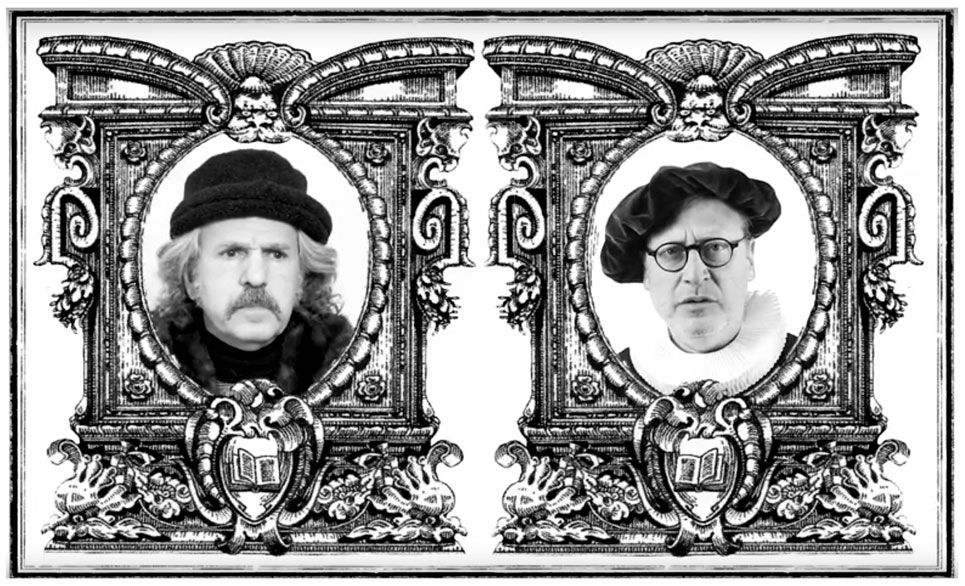
This interview—M. T. Anderson and Eugene Yelchin Discuss The Assassination of Brangwain Spurge—was conducted between M. T. Anderson, Eugene Yelchin, and Bianca Schulze. For similar books and articles, follow along with our content tagged with Elves, Fantasy, Goblins, Humorous Books, Illustrated Chapter Books, and Middle Grade Books.

